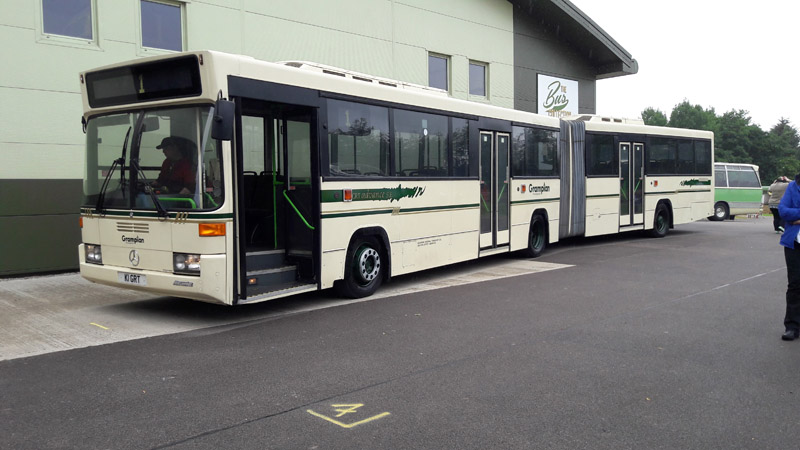The History
The articulated bus was unknown in the British Isles until 1977 despite its widespread use elsewhere in Europe. Following demonstrations of sample articulated buses from Volvo, MAN and Leyland-DAB in 1979, official UK approval was given for their use in this country in 1981. Their advantage was a high passenger carrying capacity but with many standing, and, given multiple doors, a faster loading/unloading capability in comparison with a double decker. The disadvantages were a high initial cost and high running costs in comparison with a double decker, and, on account of their length, the costs of modifying vehicle maintenance facilities.
Articulated buses in Europe were originally a modified version of contemporary underfloor engined single deck chassis to which an unpowered two axle trailer section was attached. As low floor/stepless access buses were becoming the norm, a new form of low floor articulated bus was developed which had to have the engine at the rear to push the whole vehicle train; the front section of the bus containing the driver was now unpowered. GRT 1 is of the latter form, although it has shallow steps at the entrances, and is based on an imported Mercedes Benz 0405G chassis, the only one in the UK. The Alexander of Falkirk “Cityranger” aluminium framed bodywork was designed jointly with GRT Ltd. It was licensed for 60 seated plus 50 standing passengers and is 18m long. This is the only articulated body made by Alexander and was delivered to GRT Ltd in November 1992. It was built with double glazing, has three passenger doors, and has three separate air conditioning systems with heat derived from an oil fired combustion heater.
In Aberdeen, GRT 1 was used mainly on the Bridges route but was extensively demonstrated elsewhere in the country to other group companies. Latterly it was used on school special runs before being withdrawn and coming into preservation in 2009. It is truly a one-off!

